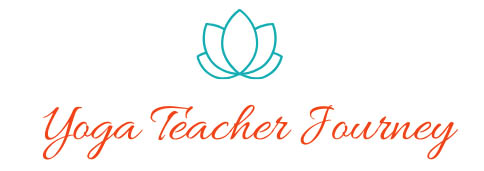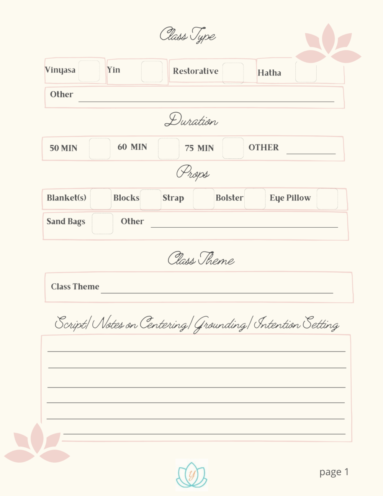It wasn’t long ago the struggle was very real. I battled each one of these challenges as most new yoga teachers do. What changed? Continue reading to see how to get past each of these very real struggles and flourish in your yoga teaching career.
1. LACKING CONFIDENCE
After completing your 200 Hour YTT (yoga teacher training) it’s not uncommon to feel a lack of confidence to actually teach a yoga class. The reason being, there is little time during the 200 Hour YTT to practice teaching.
Although the Yoga Alliance requires at least 50 hours of “Professional Essentials,” only part of this requirement includes a practicum (practice teaching). The good news is there are many ways to boost your confidence and begin teaching face-to-face or online classes.
If you haven’t requested Yoga Teacher Journey’s Ten Step Guide to Teaching with Confidence, don’t wait any longer. This guide will walk you through some top techniques to elevate your confidence and start teaching now. A few of the best-known methods include:
- Speaking the cues aloud while practicing
- Recording yourself and listening while following the cues
- Teaching to family and friends
- Watching and learning from a variety of respected teachers
- Gaining more experience with additional trainings
2. LANDING YOUR FIRST TEACHING JOB
Not all studios are keen on hiring new yoga teachers with no experience. It’s the old “catch 22” (no work until you have experience; no experience until you have worked). But now that you have built some confidence, there are ways to overcome this obstacle.
To get your “foot in the door” at a studio, you can propose to teach a workshop or series of classes. This allows the studio to try you out as a teacher without committing to placing you on the regular schedule of classes. If your event is a success, you may be more likely to be hired.
On a positive note, with the advent of online classes, comes many opportunities to teach classes on your own. This can be done on Facebook Live, Zoom, YouTube, etc. Students can Venmo payment, and you can email them a link to join. Promote your classes through social media and email and voila! Your new yoga business is born and now you have experience!
Another option is to offer to teach at your (or someone else’s) place of employment. A lot of businesses have wellness programs in place and may be open to adding your classes to their offerings. This is how I got my first teaching job. It was an awesome opportunity to gain experience with familiar faces that continued in-person until Covid hit. We moved to a Facebook Group and I continued to teach through Fb Live throughout quarantine.
3. EXPERIENCING STAGE FRIGHT
The fear of public speaking is said to be one of the most common phobias that people experience. According to VeryWellMind, an estimated 77% of individuals experience some degree of glossophobia (funny name for fear of public speaking – or stage fright). Many people are able to control this fear, but for some it can be paralyzing.
For new yoga teachers, the fear can be amplified. We are not only speaking, but demonstrating a sequence, possibly walking around the room, assisting, leading students through pranayama, etc. Whew! The pressure is on to “perform.” Or so we think. Most of it is indeed in our heads.
In this article in Psychology Today they’ve identified four contributing factors as to why we become fearful and feel threatened in these situations. Once the fear factor is present, our bodies react and the “fight, flight, freeze” response kicks in (sympathetic nervous system) as we prepare for battle. Our heart rate, blood pressure, and cortisol levels rise, limiting our ability to think and speak clearly.
Fortunately, as a trained yoga teacher, you have the tools needed to calm yourself with Pranayama (breath control), positive affirmations, and relaxation postures – techniques that can bring you back to the rest and digest state, (parasympathetic nervous system).
If you experience stage fright, take a few moments before class to practice these techniques and prepare to teach calmly and effectively.
As with everything else, experience builds confidence. The more you know about your topic, the more comfortable you will feel teaching it. Before long, you’ll notice that you are no longer feeling a surge of stage fright every time you face your students to teach.
4. IMPOSTER SYNDROME
Imposter Syndrome is described as:
- feelings of inadequacy
- doubts about your abilities
- feeling like a fraud
- fear of being exposed
It’s quite normal for new teachers to experience these feelings when first starting out. After all, you have high expectations of yourself, you are trying to live up to the expectations set by your trainer and live up to the expectations you think your students have of you. Again, a lot of it is in your head.
“The only way to stop feeling like an imposter, is to stop thinking like an imposter,” says impostersyndrome.com – yes, there’s an entire website dedicated to this topic. In 10 Steps You Can Use to Overcome Imposter Syndrome they advise to “separate feelings from fact.” The fact is that you are NOT an imposter. You are a qualified yoga teacher. You’ve got this!
The best remedy for imposter syndrome is to build your own authenticity and style. Read 7 Strategies to Becoming an Authentic Yoga Teacher for detailed information on overcoming your fraudulent fears.
5. COMPARING YOURSELF TO OTHER YOGA TEACHERS
Human beings comparing themselves to others is a natural phenomenon. In some ways it can be a good thing and motivate you to change for the better. When it becomes an obsession however, it’s time to do some work. Criticizing yourself for (what you perceive to be) every, little short-coming can take a toll on your feelings of self-worth.
Make friends with your inner critic. Recognize where the false perceptions may have come from and accept them for what they are – misunderstandings. Then forgive yourself for buying into them. Apply compassionate forgiveness to yourself, as you would a friend. Then you can begin to build an accurate perception of yourself and release the false narratives.
For more help, read this Psychology Today article with tips on breaking the comparison habit.
“Comparison is the thief of joy.”
—Theodore Roosevelt
Each and every one of us is unique for a reason. We each have our own strengths. If the negative talk or comparisons return, refuse to acknowledge them. You are exactly who you are supposed to be. Shine your light and focus on being the best, authentic, version of your yoga teacher self possible.
6. NEED FOR AFFIRMATIONS FROM STUDENTS
Who doesn’t like a little “pat on the back!” I gush with joy when I hear students say, “great class,” or “that was just what I needed.” Even a “thank you” goes a long way with me. When students leave a class quietly and say nothing, I’m left wondering – was that not a good class? After all, words of affirmation are one of the five languages of love.
If you tend to be a sensitive person who offers a lot of verbal support to your friends and loved ones, chances are you will benefit from receiving these affirmations as well. There’s nothing wrong with it unless you begin to depend on it. If not receiving affirmations brings on self-doubt, it can be a downward spiral.
The reality is students are supposed to leave your class feeling relaxed and “in the zone.” They may not feel like speaking at all. Even if you taught the most amazing class they ever attended, they may prefer to leave quietly. Ninety-nine-point nine percent of the time, it has nothing to do with you.
Thinking back to when I was a student only, I chose not to engage in chit-chat after class. I was still processing, taking in all the benefits of my practice. Not receiving affirmations is perfectly fine – and when you do receive them, they’ll feel even more special. And remember, you can give yourself positive affirmations anytime.
Additional resources:





